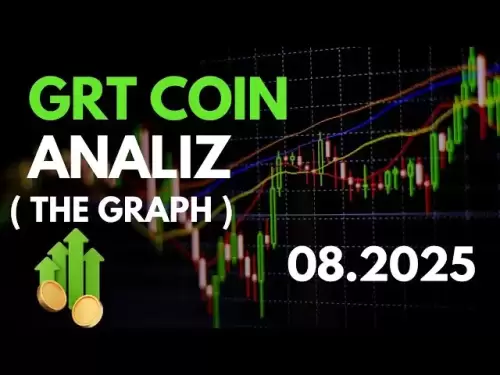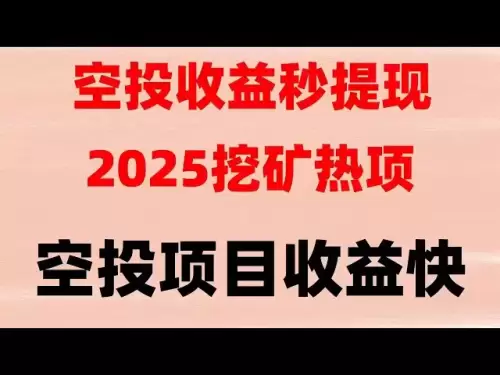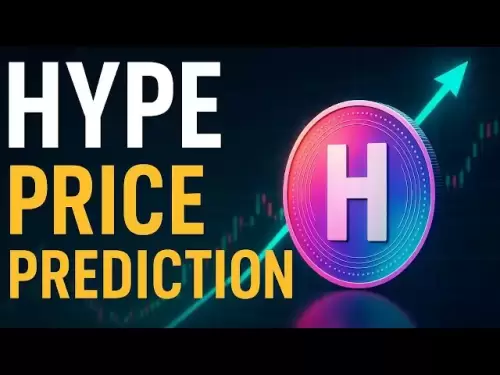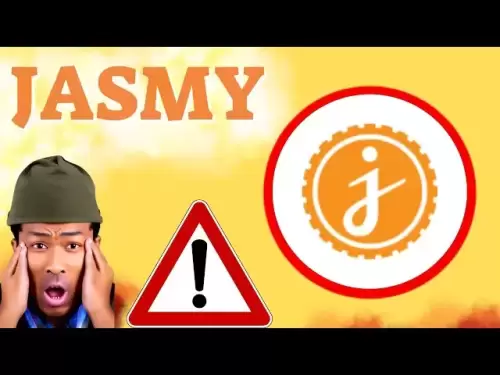-
 Bitcoin
Bitcoin $119300
2.40% -
 Ethereum
Ethereum $4254
-0.20% -
 XRP
XRP $3.184
-1.38% -
 Tether USDt
Tether USDt $1.000
0.00% -
 BNB
BNB $803.9
0.58% -
 Solana
Solana $183.1
1.50% -
 USDC
USDC $0.0000
0.01% -
 Dogecoin
Dogecoin $0.2339
-2.87% -
 TRON
TRON $0.3384
0.88% -
 Cardano
Cardano $0.8018
-0.29% -
 Hyperliquid
Hyperliquid $45.13
3.14% -
 Chainlink
Chainlink $22.10
0.96% -
 Stellar
Stellar $0.4439
-0.94% -
 Sui
Sui $3.875
-0.73% -
 Bitcoin Cash
Bitcoin Cash $570.7
0.24% -
 Hedera
Hedera $0.2589
-2.90% -
 Ethena USDe
Ethena USDe $1.001
-0.01% -
 Avalanche
Avalanche $23.83
-1.73% -
 Litecoin
Litecoin $123.8
2.61% -
 Toncoin
Toncoin $3.351
-1.13% -
 UNUS SED LEO
UNUS SED LEO $9.103
1.13% -
 Shiba Inu
Shiba Inu $0.00001356
-1.40% -
 Uniswap
Uniswap $10.93
-0.19% -
 Polkadot
Polkadot $4.057
-1.97% -
 Dai
Dai $1.000
0.01% -
 Cronos
Cronos $0.1646
4.66% -
 Ethena
Ethena $0.7974
8.11% -
 Pepe
Pepe $0.00001208
-2.89% -
 Bitget Token
Bitget Token $4.445
-1.70% -
 Monero
Monero $268.8
-2.00%
How to close a DYDX contract? How to set an automatic stop loss?
To manage DYDX contracts effectively, close positions by executing reverse trades and set automatic stop losses to mitigate risks on the dYdX platform.
May 08, 2025 at 12:29 am
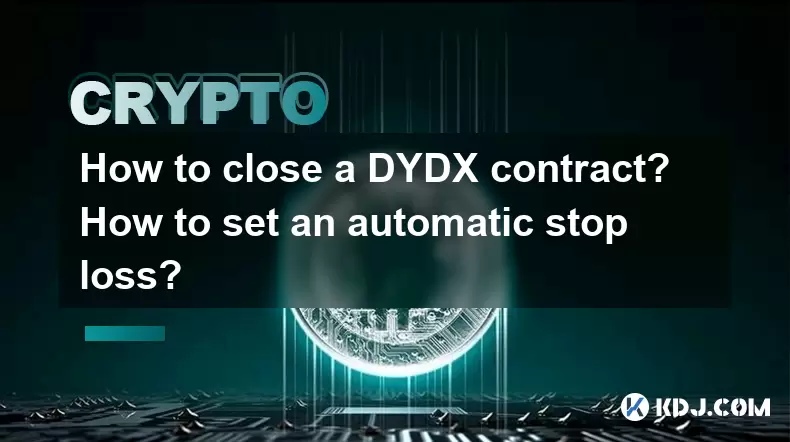
Closing a DYDX contract and setting an automatic stop loss are crucial skills for managing your positions on the dYdX decentralized exchange. Whether you're looking to mitigate risk or simply exit a trade, understanding these processes can enhance your trading strategy. In this article, we will explore the detailed steps for closing a DYDX contract and setting up an automatic stop loss, ensuring you have the knowledge to manage your trades effectively.
Understanding DYDX Contracts
Before diving into the steps to close a contract or set a stop loss, it's important to understand what a DYDX contract is. DYDX contracts are perpetual futures contracts offered by the dYdX platform, allowing traders to speculate on the price movements of various cryptocurrencies without an expiration date. These contracts can be leveraged, which means traders can enter positions larger than their initial margin.
Closing a DYDX Contract
To close a DYDX contract, you need to execute a reverse trade of your initial position. Here's how you can do it:
Navigate to the dYdX Platform: Open your preferred web browser and go to the dYdX website. Ensure you are logged into your account.
Access Your Positions: Once logged in, navigate to the "Positions" tab where you can see all your active contracts.
Select the Contract to Close: Identify the contract you wish to close. Click on the specific contract to view its details.
Execute the Reverse Trade: If you initially bought a contract, you will need to sell an equivalent amount to close it. Conversely, if you initially sold a contract, you will need to buy an equivalent amount. Enter the amount you wish to close in the "Amount" field.
Confirm the Trade: Review the details of your trade, including the potential profit or loss. Once satisfied, click on the "Confirm" button to execute the trade.
Check the Status: After executing the trade, ensure that the position has been closed by returning to the "Positions" tab. The closed contract should no longer appear in the list of active positions.
Setting an Automatic Stop Loss
An automatic stop loss is a vital tool for risk management, allowing you to limit potential losses by automatically closing a position if the market moves against you. Here's how to set up an automatic stop loss on dYdX:
Navigate to the dYdX Platform: As before, log into your dYdX account via the website.
Access Your Open Orders: Go to the "Orders" tab where you can view and manage your open orders and positions.
Select the Position: Identify the position for which you want to set a stop loss. Click on the position to access its details.
Set the Stop Loss Price: In the position details, you will find an option to set a stop loss. Enter the price at which you want the stop loss to trigger. This should be a price level at which you are willing to accept a loss and exit the trade.
Confirm the Stop Loss: Review the stop loss price you have set. Once you are satisfied, click on the "Confirm" button to activate the stop loss.
Monitor the Position: Keep an eye on the market and your position. If the market price reaches your stop loss level, the position will automatically close, limiting your loss to the amount you specified.
Managing Multiple Contracts
If you have multiple DYDX contracts open, managing them effectively is crucial. Here are some tips:
Regularly Review Your Positions: Keep track of all your open positions and their performance. Use the "Positions" tab to monitor them regularly.
Set Stop Losses for Each Contract: To manage risk across multiple contracts, consider setting stop losses for each position. This can help prevent significant losses if the market moves unfavorably.
Close Unprofitable Contracts: If a contract is consistently underperforming, consider closing it to free up capital for other opportunities.
Troubleshooting Common Issues
While closing contracts and setting stop losses on dYdX is generally straightforward, you may encounter some issues. Here's how to troubleshoot common problems:
Insufficient Margin: If you encounter an error due to insufficient margin, you may need to add more funds to your account or close other positions to free up margin.
Technical Glitches: If the platform is experiencing technical issues, try refreshing the page or logging out and back in. If problems persist, reach out to dYdX customer support.
Stop Loss Not Triggering: Ensure that you have set the stop loss correctly. If it still doesn't trigger, check the market conditions and ensure that the price has indeed reached your specified level.
Ensuring Security and Best Practices
To ensure a secure trading experience on dYdX, follow these best practices:
Use Strong Passwords: Always use a strong, unique password for your dYdX account and enable two-factor authentication (2FA) for added security.
Monitor Your Account: Regularly check your account activity and transaction history to detect any unauthorized access or suspicious behavior.
Understand Leverage Risks: Be aware of the risks associated with leveraged trading. Only use leverage if you fully understand the potential for both gains and losses.
Stay Informed: Keep up-to-date with market news and updates from dYdX to make informed trading decisions.
Frequently Asked Questions
Q: Can I close a DYDX contract partially?
A: Yes, you can close a DYDX contract partially by entering a smaller amount than your total position size when executing the reverse trade. This allows you to reduce your exposure while keeping part of the position open.
Q: What happens if the market gaps through my stop loss price?
A: If the market price gaps through your stop loss price, your position will be closed at the next available price, which may be different from your specified stop loss price. This is known as slippage and is a risk to be aware of when trading.
Q: Can I modify a stop loss after setting it?
A: Yes, you can modify a stop loss after setting it. Simply go back to the position details, adjust the stop loss price, and confirm the changes. This allows you to adapt your risk management strategy as market conditions change.
Q: How does dYdX handle liquidations?
A: dYdX automatically liquidates positions when the margin falls below the maintenance margin level. This is done to protect the platform and other users from negative account balances. If a position is liquidated, any remaining margin after covering the loss is returned to the trader's account.
Disclaimer:info@kdj.com
The information provided is not trading advice. kdj.com does not assume any responsibility for any investments made based on the information provided in this article. Cryptocurrencies are highly volatile and it is highly recommended that you invest with caution after thorough research!
If you believe that the content used on this website infringes your copyright, please contact us immediately (info@kdj.com) and we will delete it promptly.
- BlockDAG's T6900 Crypto Presale Buzz: Is the $0.0016 Entry the Real Deal?
- 2025-08-11 09:08:47
- Animoca Brands' Cool Cats Investment: A Purr-fect Match for the NFT Future
- 2025-08-11 09:08:47
- XRP, Luminite Wallet, and DeFi Access: A New Era?
- 2025-08-11 09:08:47
- Dogecoin, SHIB Whales, and Meme Coins: What's the Latest?
- 2025-08-11 09:08:47
- Bitcoin's Wild Ride: Short Squeezes, $120K Dreams, and What It All Means
- 2025-08-11 09:08:48
- Crypto Treasury, Capital Shift, and Startup Raises: What's the Deal?
- 2025-08-11 09:08:48
Related knowledge

How to purchase Aragon (ANT)?
Aug 09,2025 at 11:56pm
Understanding Aragon (ANT) and Its PurposeAragon (ANT) is a decentralized governance token that powers the Aragon Network, a platform built on the Eth...

Where to trade Band Protocol (BAND)?
Aug 10,2025 at 11:36pm
Understanding the Role of Private Keys in Cryptocurrency WalletsIn the world of cryptocurrency, a private key is one of the most critical components o...

What is the most secure way to buy Ocean Protocol (OCEAN)?
Aug 10,2025 at 01:01pm
Understanding Ocean Protocol (OCEAN) and Its EcosystemOcean Protocol (OCEAN) is a decentralized data exchange platform built on blockchain technology,...

Where can I buy UMA (UMA)?
Aug 07,2025 at 06:42pm
Understanding UMA and Its Role in Decentralized FinanceUMA (Universal Market Access) is an Ethereum-based decentralized finance (DeFi) protocol design...

How to buy Storj (STORJ) tokens?
Aug 09,2025 at 07:28am
Understanding Storj (STORJ) and Its Role in Decentralized StorageStorj is a decentralized cloud storage platform that leverages blockchain technology ...
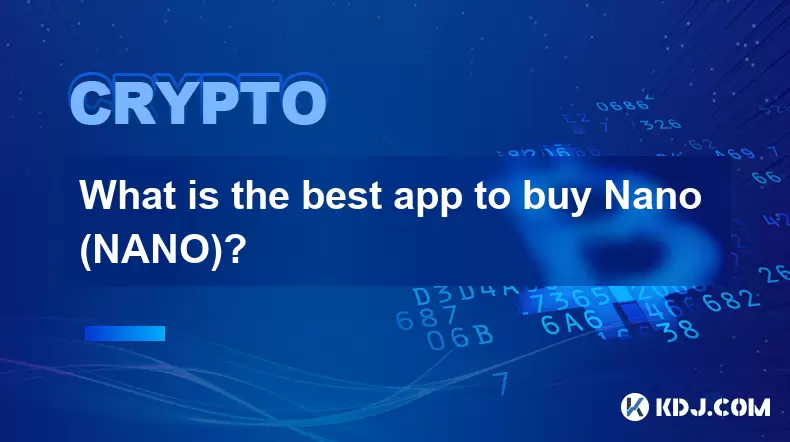
What is the best app to buy Nano (NANO)?
Aug 09,2025 at 03:35am
Understanding Nano (NANO) and Its Unique FeaturesNano is a feeless, instant cryptocurrency designed for fast peer-to-peer transactions. Unlike many ot...

How to purchase Aragon (ANT)?
Aug 09,2025 at 11:56pm
Understanding Aragon (ANT) and Its PurposeAragon (ANT) is a decentralized governance token that powers the Aragon Network, a platform built on the Eth...

Where to trade Band Protocol (BAND)?
Aug 10,2025 at 11:36pm
Understanding the Role of Private Keys in Cryptocurrency WalletsIn the world of cryptocurrency, a private key is one of the most critical components o...

What is the most secure way to buy Ocean Protocol (OCEAN)?
Aug 10,2025 at 01:01pm
Understanding Ocean Protocol (OCEAN) and Its EcosystemOcean Protocol (OCEAN) is a decentralized data exchange platform built on blockchain technology,...

Where can I buy UMA (UMA)?
Aug 07,2025 at 06:42pm
Understanding UMA and Its Role in Decentralized FinanceUMA (Universal Market Access) is an Ethereum-based decentralized finance (DeFi) protocol design...

How to buy Storj (STORJ) tokens?
Aug 09,2025 at 07:28am
Understanding Storj (STORJ) and Its Role in Decentralized StorageStorj is a decentralized cloud storage platform that leverages blockchain technology ...

What is the best app to buy Nano (NANO)?
Aug 09,2025 at 03:35am
Understanding Nano (NANO) and Its Unique FeaturesNano is a feeless, instant cryptocurrency designed for fast peer-to-peer transactions. Unlike many ot...
See all articles





















